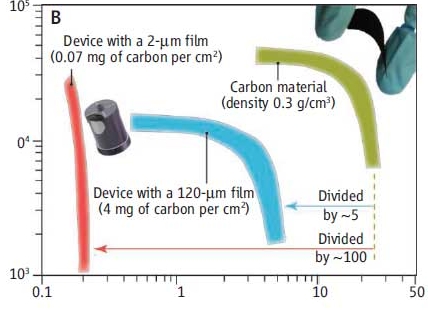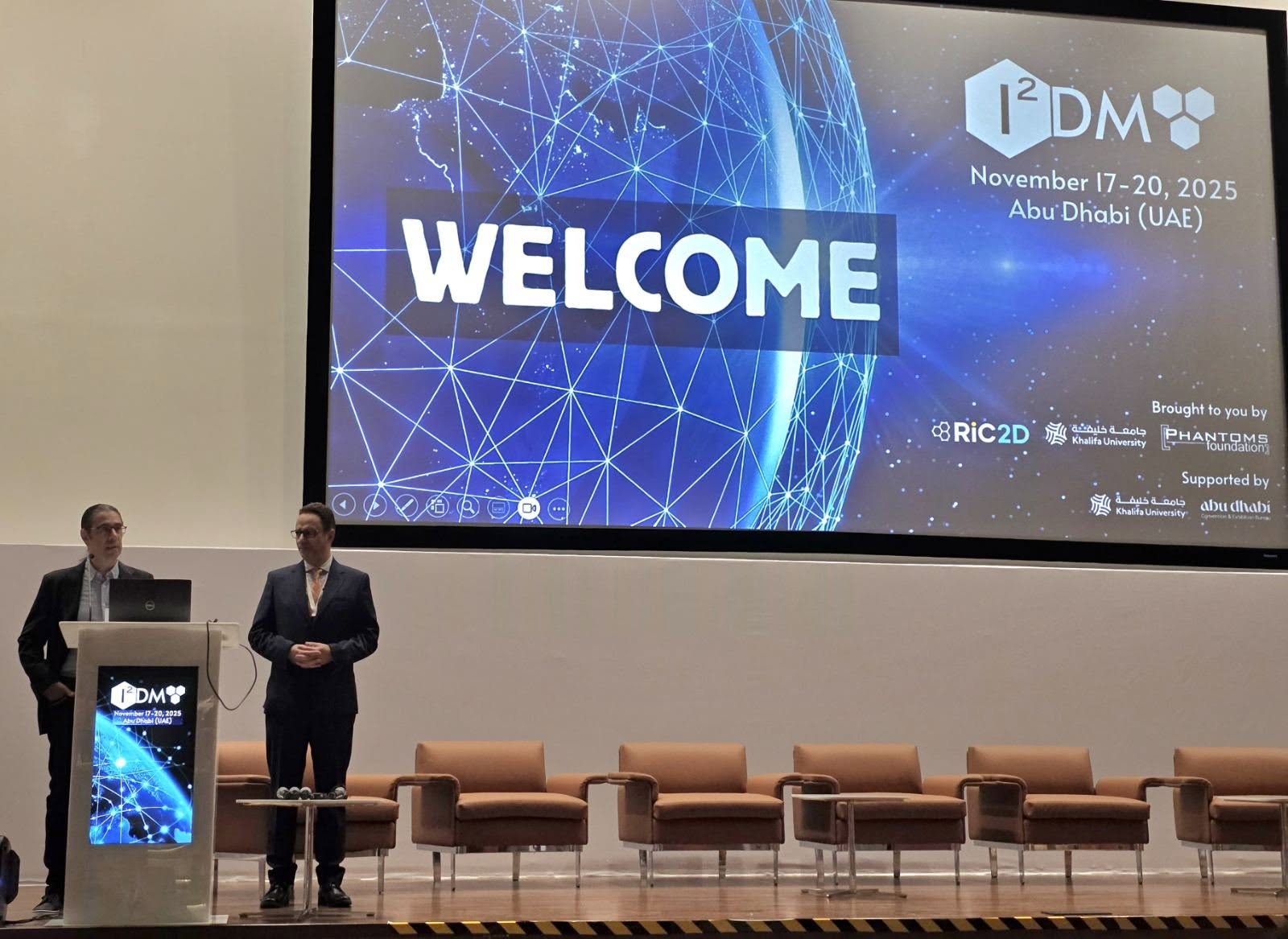True Performance Metrics in Electrochemical Energy Storage
Y. Gogotsi * and P. Simon **
Exceptional performance claims for electrodes used in batteries and electrochemical capacitors often fail to hold up when all device components are included.
______________________________________
* Department of Materials Science and Engineering and A. J. Drexel Nanotechnology Institute, Drexel University, Philadelphia, PA 19104, USA.
** Universit? Paul Sabatier– Toulouse III, CIRIMAT UMR-CNRS 5085, 118 Route de Narbonne, 31062 Toulouse, France. E-mail: gogotsi@drexel.
edu,
Этот e-mail адрес защищен от спам-ботов, для его просмотра у Вас должен быть включен Javascript
А dramatic expansion of research in the area of electrochemical energy storage (EES) during the past decade has been driven by the demand for EES in handheld electronic devices, transportation, and storage of renewable energy for the power grid . However, the outstanding properties reported for new electrode materials may not necessarily be applicable to performance of electrochemical capacitors (ECs). These devices, also called supercapacitors or ultracapacitors , store charge with ions from solution at charged porous electrodes. Unlike batteries, which store large amounts of energy but deliver it slowly, ECs can deliver energy faster (develop high power), but only for a short time. However, recent work has claimed energy densities for ECs approaching or even exceeding that of batteries. Prof. Y. Gogotsi and Prof. P. Simon in that paper, published in Science Magazine, show that even when some metrics seem to support these claims, actual device performance may be rather mediocre.They focused in that paper on ECs, but these considerations also apply to lithium (Li)—ion batteries.
Increasing the energy density of ECs usually comes at the cost of losses in cyclability or power, which are the most important properties of ECs and without which they become mediocre batteries. A major effort has been directed toward increasing the energy density of ECs by either increasing the capacitance of the material, or the operation voltage window, or both.
Some recent publications on graphene and nanotube-based materials have used Ragone plots to argue that supercapacitors can achieve the energy density of batteries.
Reporting the energy and power densities per weight of active material alone on a Ragone plot may not give a realistic picture of the performance that the assembled device could reach because the weight of the other device components also needs to be taken into account. ECs are similar to Li-ion batteries .

A tale of two plots. One way to compare electrical energy storage devices is to use Ragone plots ( 10), which show both power density (speed of charge and discharge) and energy density (storage capacity). These plots for the same electrochemical capacitors are on a gravimetric (per weight) basis in (A) and on a volumetric basis in (B). The plots show that excellent properties of carbon materials will not translate to medium- and large-scale devices if thin-fi lm and/or low-density electrodes are used ( 10).
By presenting energy and power densities in a consistent manner, researchers can facilitate introduction of new materials and fi nd solutions for EES challenges the world faces. National and international testing facilities should be created for benchmarking electrodes and devices similar to the facilities that exist for benchmarking photovoltaics. Clear rules for reporting the performance of new materials for EES devices would help scientists who are not experts in the fi eld, as well as engineers, investors, and the general public, who rely on the data published by the scientists, to assess competing claims. But numerous scientists who have been publishing ridiculous claims about enormous capacity of novel battery materials and energy density of electrochemical capacitors exceeding that of Li-ion batteries in the past couple of years will not like this discourse.
Source: science.mag.org




 Highlights
Highlights We are excited to share that our Carbon-Ukraine (Y-Carbon LLC) company participated in the I2DM Summit and Expo 2025 at Khalifa University in Abu-Dhabi! Huge thanks to Research & Innovation Center for Graphene and 2D Materials (RIC2D) for hosting such a high-level event.It was an incredible opportunity to meet brilliant researchers and innovators working on the next generation of 2D materials. The insights and energy from the summit will definitely drive new ideas in our own development.
We are excited to share that our Carbon-Ukraine (Y-Carbon LLC) company participated in the I2DM Summit and Expo 2025 at Khalifa University in Abu-Dhabi! Huge thanks to Research & Innovation Center for Graphene and 2D Materials (RIC2D) for hosting such a high-level event.It was an incredible opportunity to meet brilliant researchers and innovators working on the next generation of 2D materials. The insights and energy from the summit will definitely drive new ideas in our own development. Carbon-Ukraine team had the unique opportunity to visit XPANCEO - a Dubai-based deep tech startup company that is developing the first smart contact lenses with AR vision and health monitoring features, working on truly cutting-edge developments.
Carbon-Ukraine team had the unique opportunity to visit XPANCEO - a Dubai-based deep tech startup company that is developing the first smart contact lenses with AR vision and health monitoring features, working on truly cutting-edge developments. Our Carbon-Ukraine team (Y-Carbon LLC) are thrilled to start a new RIC2D project MX-Innovation in collaboration with Drexel University Yury Gogotsi and Khalifa University! Amazing lab tours to project collaborators from Khalifa University, great discussions, strong networking, and a wonderful platform for future collaboration.
Our Carbon-Ukraine team (Y-Carbon LLC) are thrilled to start a new RIC2D project MX-Innovation in collaboration with Drexel University Yury Gogotsi and Khalifa University! Amazing lab tours to project collaborators from Khalifa University, great discussions, strong networking, and a wonderful platform for future collaboration.
 MXenes potential applications include sensors, wound healing materials, and drug delivery systems. A recent study explored how different synthesis methods affect the safety and performance of MXenes. By comparing etching conditions and intercalation strategies, researchers discovered that fine-tuning the surface chemistry of MXenes plays a crucial role in improving biocompatibility. These results provide practical guidelines for developing safer MXenes and bring the field one step closer to real biomedical applications.
MXenes potential applications include sensors, wound healing materials, and drug delivery systems. A recent study explored how different synthesis methods affect the safety and performance of MXenes. By comparing etching conditions and intercalation strategies, researchers discovered that fine-tuning the surface chemistry of MXenes plays a crucial role in improving biocompatibility. These results provide practical guidelines for developing safer MXenes and bring the field one step closer to real biomedical applications. An excellent review highlighting how MXene-based sensors can help tackle one of today’s pressing environmental challenges — heavy metal contamination. Excited to see such impactful work moving the field of environmental monitoring and sensor technology forward!
An excellent review highlighting how MXene-based sensors can help tackle one of today’s pressing environmental challenges — heavy metal contamination. Excited to see such impactful work moving the field of environmental monitoring and sensor technology forward!
 Carbon-Ukraine team was truly delighted to take part in the kickoff meeting of the ATHENA Project (Advanced Digital Engineering Methods to Design MXene-based Nanocomposites for Electro-Magnetic Interference Shielding in Space), supported by NATO through the Science for Peace and Security Programme.
Carbon-Ukraine team was truly delighted to take part in the kickoff meeting of the ATHENA Project (Advanced Digital Engineering Methods to Design MXene-based Nanocomposites for Electro-Magnetic Interference Shielding in Space), supported by NATO through the Science for Peace and Security Programme. Exellent news, our joint patent application with Drexel University on highly porous MAX phase precursor for MXene synthesis published. Congratulations and thanks to all team involved!
Exellent news, our joint patent application with Drexel University on highly porous MAX phase precursor for MXene synthesis published. Congratulations and thanks to all team involved! Our team was very delighted to take part in International Symposium "The MXene Frontier: Transformative Nanomaterials Shaping the Future" – the largest MXene event in Europe this year!
Our team was very delighted to take part in International Symposium "The MXene Frontier: Transformative Nanomaterials Shaping the Future" – the largest MXene event in Europe this year!  Last Call! Have you submitted your abstract for IEEE NAP-2025 yet? Join us at the International Symposium on "The MXene Frontier: Transformative Nanomaterials Shaping the Future" – the largest MXene-focused conference in Europe this year! Final Submission Deadline: May 15, 2025. Don’t miss this exclusive opportunity to showcase your research and engage with world leaders in the MXene field!
Last Call! Have you submitted your abstract for IEEE NAP-2025 yet? Join us at the International Symposium on "The MXene Frontier: Transformative Nanomaterials Shaping the Future" – the largest MXene-focused conference in Europe this year! Final Submission Deadline: May 15, 2025. Don’t miss this exclusive opportunity to showcase your research and engage with world leaders in the MXene field! We are excited to announce the publication of latest review article on MXenes in Healthcare. This comprehensive review explores the groundbreaking role of MXenes—an emerging class of 2D materials—in revolutionizing the fields of medical diagnostics and therapeutics. Read the full article here: https://doi.org/10.1039/D4NR04853A.
We are excited to announce the publication of latest review article on MXenes in Healthcare. This comprehensive review explores the groundbreaking role of MXenes—an emerging class of 2D materials—in revolutionizing the fields of medical diagnostics and therapeutics. Read the full article here: https://doi.org/10.1039/D4NR04853A. Congratulations and thank you to our collaborators from TU Wien and CEST for very interesting work and making it published! In this work, an upscalable electrochemical MXene synthesis is presented. Yields of up to 60% electrochemical MXene (EC-MXene) with no byproducts from a single exfoliation cycle are achieved.
Congratulations and thank you to our collaborators from TU Wien and CEST for very interesting work and making it published! In this work, an upscalable electrochemical MXene synthesis is presented. Yields of up to 60% electrochemical MXene (EC-MXene) with no byproducts from a single exfoliation cycle are achieved. Congratulations to all collaborators with this interesting joint work!
Congratulations to all collaborators with this interesting joint work!